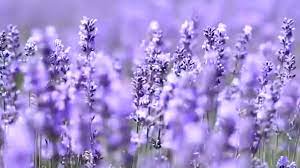Bhaderwah in the foothills of middle Himalayas of Doda district, which once was a hotbed of terrorism, has emerged as “lavender valley” of Jammu and Kashmir.
The successful “purple revolution” in the scenic valley surrounded by snow clad peaks has not only brought it the title of India’s “lavender capital” but also attracted states like Meghalaya, Uttarakhand, Himachal Pradesh and Gujarat. Now, they, too, want to adopt lavender cultivation.
The cultivation of lavender has become possible because of the initiatives of the government and some progressive farmers led by 34-year-old Touqeer Bagban.
About 2,500 farmers in Bhaderwah have given up conventional farming of growing maize to embrace profitable lavender cultivation. Bagban was instrumental in changing the fortunes of 2500 poor farmers of Chenab region by motivating and encouraging them to switch over to aromatic and medicinal plants from traditional crops like maize and paddy.
“I belong to a farmers’ family and own a cedar wood extraction oil unit but I always nourished a dream to utilise local available natural resources to create jobs and provide profitable livelihood avenues to the small and marginal farmers,” he said.
Also Read | Kashmir’s stunning landscapes make It a Top Destination for Weddings
Touqeer’s 74-year-old father Abdul Gaffar Bagban, a man with vast knowledge of medical and aromatic plants that grow in the Himalayas, encouraged him to think “out of the box” and do something unique.
“Motivated by my father, I not only converted 10 kanals of paddy farm into a lavender field but also encouraged other farmers to switch over to it,” he said. “Initially, I found no takers of my ideas but I kept my resolve and traveled extensively across the Chenab valley to convince farmers about lavender cultivation. I even assured them to bear all their losses, in case they don’t find aromatic and medicinal plants a profitable business compared to traditional crops,” he said.
Touqeer’s missionary zeal got a shot in the arm when in 2016, ministry of sciences and technology through Council of Scientific and Industrial Research-Indian Institute of Integrative Medicine (CSIR-IIIM) started “aroma mission”. “This initiative gave much needed impetus and as a result 2500 families are today successfully growing exotic lavender and Bhadarwah has become the leading producer of it in India,” he said. “The success story of the farmers has brought Bhaderwah on the map of India and it is now called India’s lavender capital,” he added.
Last year, lavender was named as “One District one product” for Doda district. To further boost the farmers, Union minister for science and technology Dr Jitendra Singh took personal interest and installed 11 lavender distillation units in Bhaderwah.
Today, Touqeer—the face of purple revolution in Bhaderwah provides logistical help to fellow farmers and a market to sell their produce. It has increased their income four times compared to traditional crops.
Also Read: Experience the Enchantment of Gurez Valley: Go Gurez, Kashmir’s Hidden Gem!
The deputy magistrate of Doda, Vishesh Pal Mahajan said, “Bhaderwah in Doda district is the birthplace of India’s purple revolution. Lavender is an avenue of employment generation and research opening many paradigms of development”.
The lavender cultivation has changed the lives of many farmers and it was heartening to note that Prime Minister, Narendra Modi, in the 99th edition of Mann ki Baat, mentioned the name of Bhaderwah and appreciated the farmers of this area for lavender cultivation, which is an example of “AtamNirbhar Bharat”. Mahajan informed that approximately 300 hectares of area was under lavender cultivation in Doda district.
“In coming years, the area shall expand manifold as farmers are propagating plant material in Doda district. The net annual income of farmers who switched from maize to lavender cultivation has increased manifold from around ₹40,000 to ₹60,000 per hectare to ₹3.50 lakh to ₹6 lakh per hectare”. The deputy magistrate informed that the farmers of Doda district produced 300, 500, 800, and 1500 litres of lavender oil in 2019, 2020, 2021, and 2022, respectively. “They earned over ₹5-crore from 2018 to 2022 by selling dry flowers, lavender plants and lavender oil,” he said. Lavender plantation was actually started in 2010 in Lehrote village of Doda district after CSIR IIIM Jammu provided planting material to two to three farmers. Later in 2013-14 department of floriculture provided 1.75 lakh quality planting material procured from IIM Kashmir to 36 farmers of Doda. “Due to awareness to farmers by the floriculture department, lavender cultivation expanded to Tipri and surrounding areas. Almost 70 percent of lavender is grown in Bhalla and Bhaderwah blocks of the district.. Beside this, lavender cultivation is being spread to temperate areas of Marmat, Khillani, Bhagwah, Dali Udyanpur, Bharat Bhagla, Gandoh Bhalessa,” he said. In 2018- 19 two progressive farmers —Bharat Bhushan and Kunj Lal were motivated to develop lavender nurseries, for which incentive under plantation infrastructure development (small lavender nursery) was provided by floriculture department to them. “As on date near about 50 small lavender nurseries are raised by the farmers and nearly 45 lakh planting material shall be available in November this year for plantation. As a result 250 hectares of area shall be covered under lanvender cultivation,” said Mahajan. He also informed that women were primarily employed in the lavender fields for harvesting and processing the flower, which has increased also given livelihood to the fair gender.


